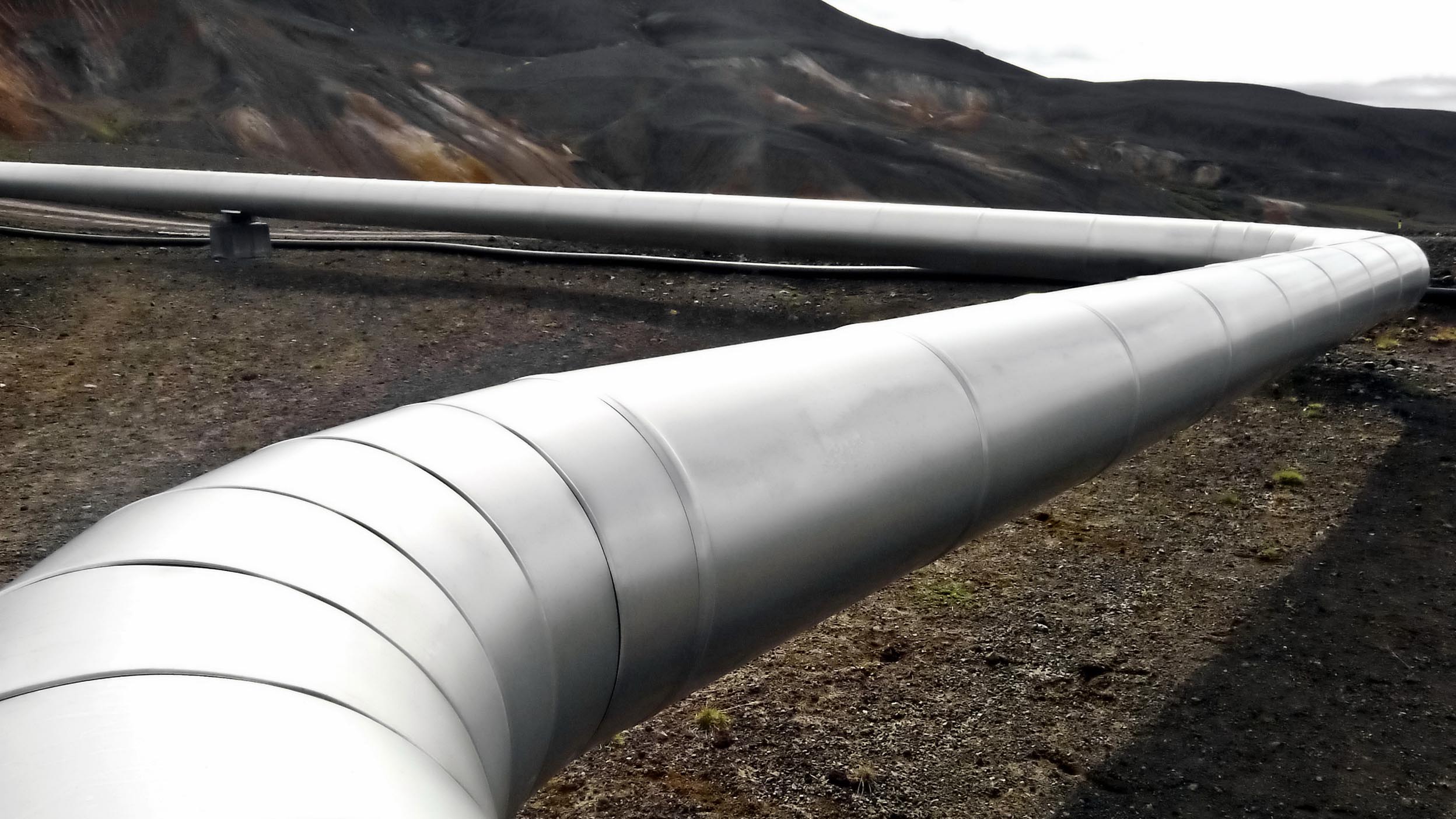
Markets and Economy Did markets overreact to the December US jobs report?
The December US jobs report showed strong growth, prompting market concerns about the economy running too hot and opening the door to more inflation.

Midstream companies expanded their infrastructure to transport oil drawn from shale in massive amounts.
Midstream companies have built out their infrastructure though intrastate pipeline extensions but smaller projects remain.
Artificial Intelligence may be an additional tailwind for the energy industry, with data centers projected to draw heavily on the power grid.
Since the dawn of the decade, the S&P 500 has almost doubled. It’s been an impressive run. The Alerian MLP Index, which tracks energy infrastructure master limited partnerships, has outperformed the S&P during that time.1 Given that the decade started with a global pandemic that severely curtailed energy demand, this performance may seem unfathomable on its surface. But there are many reasons behind the rise, which had its origins decades prior. Demand for oil and other forms of energy, driven by artificial intelligence (AI) and developing technologies, may top the list.
Brian Watson, Invesco’s Senior Portfolio Manager, Energy Infrastructure, sat in on the Greater Possibilities podcast to look at growth in the energy market, which includes oil, natural gas, solar, and more. How did midstream energy companies — which transport, store, and process oil and natural gas — go from boring dividend generators to self-funded infrastructure behemoths? How do midstream companies look now? Where does AI fit into the energy equation?
Shale changed the energy landscape back in the 1990s. Methods that extract oil and natural gas from these unconventional rock formations turned seemingly dried-up parts of the country into major producers. Trickles became gushes, and customers needed pipelines to get that oil and gas out into the world. Midstream companies set about expanding their infrastructure — pipelines, storage and processing facilities —and paying for it by issuing equity. The market liked that until it didn’t, and midstream companies realized that a massive shift was in order.
‘14 comes along, and we end over a decade of oil essentially trading $90-plus very reliably, and gas of seven, eight bucks. The energy markets go through, in my experience, the worst cyclical break in history. And really, there was several cyclical breaks in a row, and so the equities didn't trade great. And suddenly, all these midstream guys realized that they couldn't issue equity, they had to become self-funding. We went through a period where midstream company after midstream company set their sights on becoming self-funding. Another way to say that is everyone's distribution coverage, or the amount of cash they made versus what they paid out, it was always about 1.0. The cash you made, you paid out 1.0 coverage. Everybody wanted to get closer to two so it's a massive shift in just a structural way that these guys are operating their finances. They go about doing that. Really, that is achieved, I'd say shortly before COVID hits. In 2020 COVID upsets everything and puts everything back another six months, but that had essentially been done as this great three years you were just talking about began to emerge. And what you really saw was I think a confluence of events where you had A, the worst fears of COVID and its impact on the energy markets become alleviated. The market comes and looks at midstream and they see now companies with hefty distribution coverages, so dividends that have been de-risked quite a lot. They see balance sheets that are repaired or quickly repairing, and they see companies actually that started this process of becoming self-funding, finding themselves with room to begin to grow dividends again.
Midstream companies transformed themselves. They went from sleepy companies that paid out big dividends through a period of rapid capital expansion to now, when the infrastructure is largely built out. Projects remain, but they tend to be intrastate pipeline extensions, which are cheaper and much more manageable. Less capital spending has led to higher dividends. And that trend seems poised to continue across the sector.
These thousands of miles, these huge, huge multi-state pipes are pretty much built. You'll continue to de-bottleneck. In West Texas, natural gas production continues to rise with crude oil production. And as most every field ages, crude oil field ages, the amount of gas coming out of the ground per barrel usually trickles up. Your gas growth is usually better than your crude growth in an oil field like that, so we'll continue to de-bottleneck, but you're talking about an interstate system, additions on interstate pipes that are much easier, cheaper to complete than something that stretches across six or seven states. Now, Haynesville which I can probably get into it a little bit more, but is almost certainly going to be called on to grow significantly in the next five, six years. That'll need some more pipes. But again, these will be pipes taking something within the state of Louisiana or perhaps Texas to Louisiana. They're just very manageable projects.
Artificial Intelligence is a power-hungry trend. And it’s become a hot topic for energy companies, in part because of the massive data centers that AI will likely spawn. One middle-of-the-road estimate shows data centers more than doubling their draw on the power grid to 8% of the total by 2030. Exports of liquified natural gas (LNG) are on pace to double by the end of the decade. AI looks to be an additional tailwind for the energy industry and a significant one at that.
For midstream energy generally, AI is just additional tailwind. If you think about the drivers mostly for natural gas consumption going forward, first is LNG, which is just enormous. We export about 11/12 BCF per day of LNG today, and we're in the process between now and 2030 of doubling that. It's just a huge amount. We produce about 100 BCF, that's in context. AI, everybody's trying to wrap their hands around it, but obviously, these are massive users of energy power generation. We've looked at a bunch of different research reports. We've got a block coming out here shortly and we used some Goldman data because it seemed in the middle, and conservative, and thought out. Goldman is estimating 47 gigawatts of new power demand between now and 2030, taking the total power grid draw for data centers from three to eight percent, which is obviously a massive increase.”
Wind and solar figure into the energy equation. But the issue of intermittency has proved challenging for AI data centers that must run 24/7. (The wind doesn’t always blow, and the sun doesn’t always shine.) Coal also figures into the equation but emits about 60% more carbon dioxide than natural gas. So, in many cases, Brian says, natural gas remains the most logical option for fueling the future.
I think you go back a couple of years ago, there was a lot of expectations that wind and solar plus batteries would allow the retirement of natural gas generation. I think more and more that's just proving not to be a very realistic option, just from the budgetary premise alone.
Listen to the full conversation
Explore our suite of SteelPath MLP funds:
Invesco SteelPath MLP Alpha Fund
Invesco SteelPath MLP Alpha Plus Fund
From March 2020 through June 2024, the S&P 500 Index returned 125.82% and the Alerian MLP Index returned 350.43%. Data from Bloomberg L.P. as of June 30, 2024.

The December US jobs report showed strong growth, prompting market concerns about the economy running too hot and opening the door to more inflation.

With inflation concerns prevalent, markets didn’t appreciate the strong December US jobs report, but was the initial response an overreaction?

Markets around the world rose last year despite geopolitical uncertainty, a trend that I believe seems poised to continue.
Important information
NA3822292
Image: rigamondis/Getty
All investing involves risk, including the risk of loss.
Past performance does not guarantee future results.
An investment cannot be made directly in an index.
Many products and services offered in technology-related industries are subject to rapid obsolescence, which may lower the value of the issuers.
Most MLPs operate in the energy sector and are subject to the risks generally applicable to companies in that sector, including commodity pricing risk, supply and demand risk, depletion risk and exploration risk. MLPs are also subject to the risk that regulatory or legislative changes could eliminate the tax benefits enjoyed by MLPs, which could have a negative impact on the after-tax income available for distribution by the MLPs and/or the value of the portfolio’s investments. Although the characteristics of MLPs closely resemble a traditional limited partnership, a major difference is that MLPs may trade on a public exchange or in the over-the-counter market. Although this provides a certain amount of liquidity, MLP interests may be less liquid and subject to more abrupt or erratic price movements than conventional publicly traded securities. The risks of investing in an MLP are similar to those of investing in a partnership and include more flexible governance structures, which could result in less protection for investors than investments in a corporation. MLPs are generally considered interest-rate-sensitive investments. During periods of interest rate volatility, these investments may not provide attractive returns.
Energy infrastructure MLPs are subject to a variety of industry-specific risk factors that may adversely affect their business or operations, including those due to commodity production, volumes, commodity prices, weather conditions, terrorist attacks, etc. They are also subject to significant federal, state and local government regulation.
All data provided by Invesco unless otherwise specified.
The Alerian MLP Index is a float-adjusted, capitalization-weighted index measuring master limited partnerships, or MLPs, whose constituents represent approximately 85% of total float-adjusted market capitalization.
The S&P 500 Index measures the stock performance of 500 large companies listed on stock exchanges in the United States.
Data on production of oil and liquefied natural gas, or LNG, is from the US Energy Information Administration as of June 28, 2024.
Data on oil and natural gas prices from Bloomberg as of June 30, 2024.
Background on distribution coverage, free cash flow, leverage, and divided increases of midstream companies from Wells Fargo Securities as of June 30, 2024. Estimates of power demand growth to 2030 and its impact on natural gas demand are from Goldman Sachs as of April 28, 2024
Comparisons of the CO2 impact of natural gas compared to coal is from the US Energy Information Administration as of June 28, 2024. BCF stands for billion cubic feet.
The opinions referenced above are those of the author as of July 10, 2024. These comments should not be construed as recommendations, but as an illustration of broader themes. Forward-looking statements are not guarantees of future results. They involve risks, uncertainties and assumptions; there can be no assurance that actual results will not differ materially from expectations.
This link takes you to a site not affiliated with Invesco. The site is for informational purposes only. Invesco does not guarantee nor take any responsibility for any of the content.